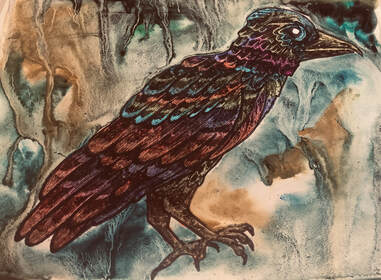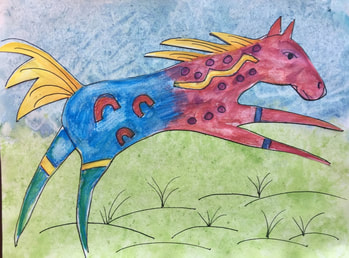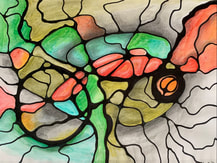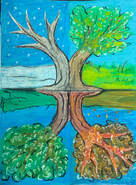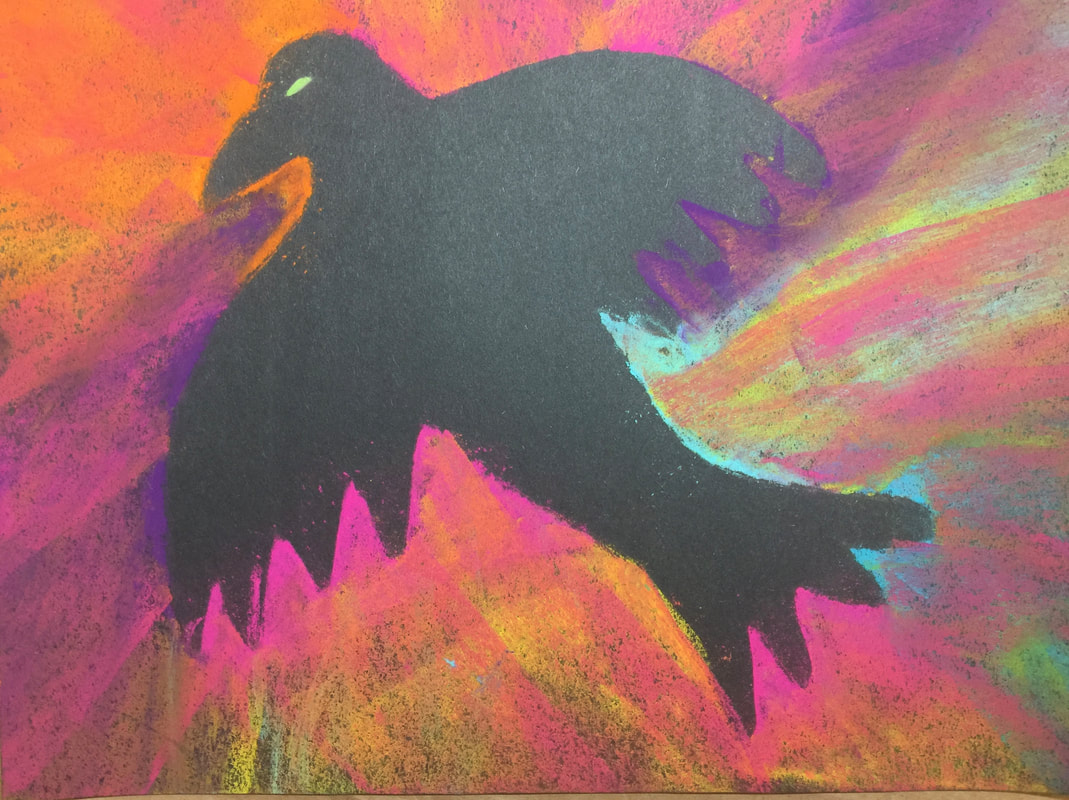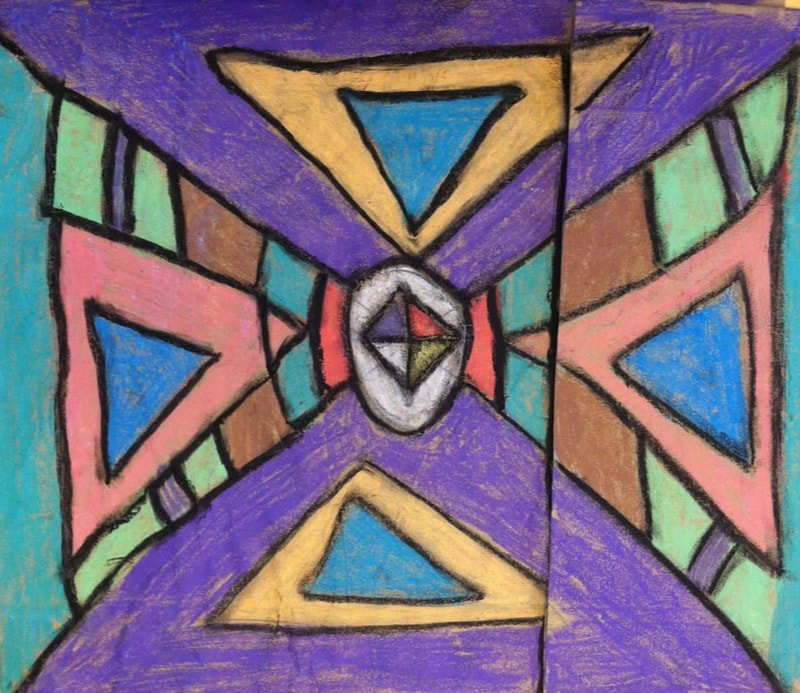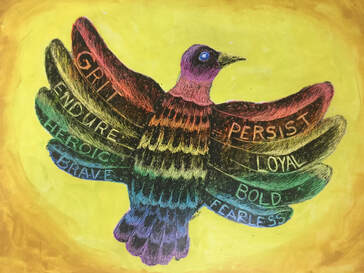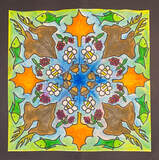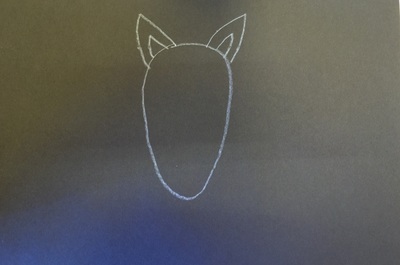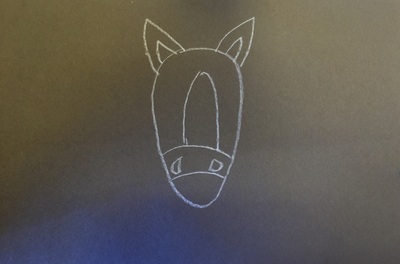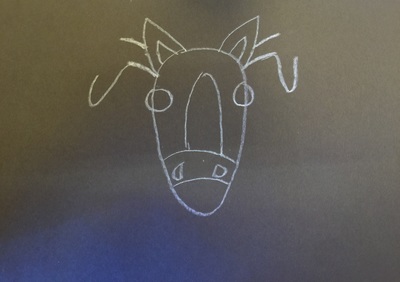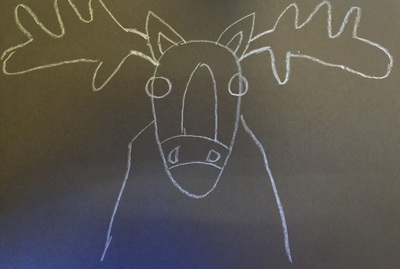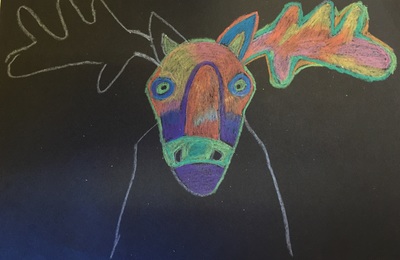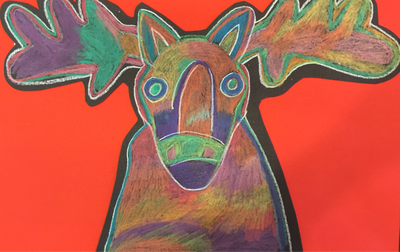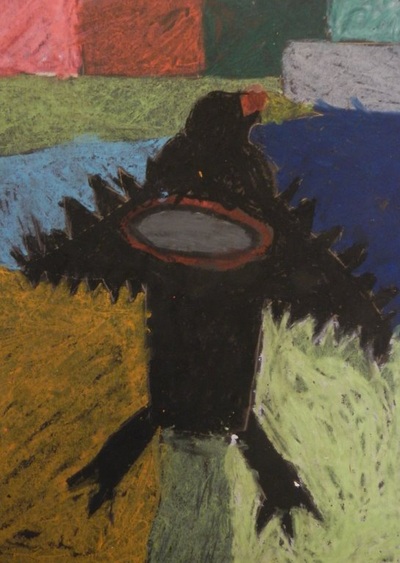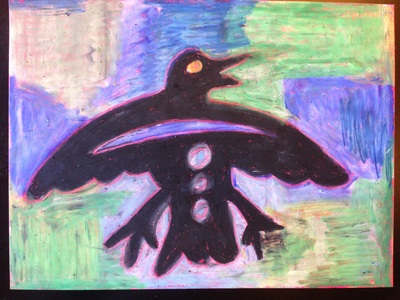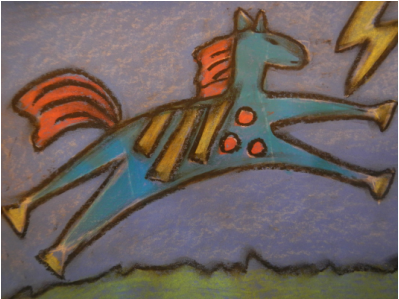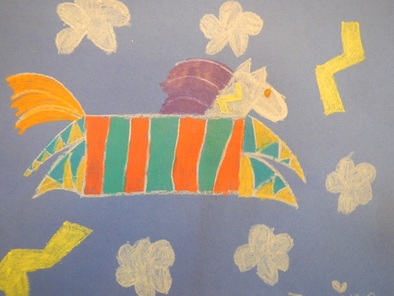Native American Lesson Ideas: Drawing
Scroll down for free art inspiration!
Click HERE to visit my TPT lesson store
Stick Game:
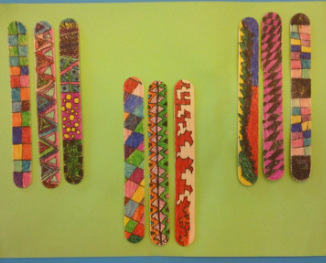
A version of this game was played by many tribes.
Students created a variety of patterns on one side of a wooden stick using black sharpie markers. They then had a choice to color it in or leave it.
To play the game one needs 3 sticks, decorated on one side.
3 blank sticks= 10 points
2 blank + 1 pattern= 2 points
1 Blank + 2 pattern= 3 points
3 pattern = 5 points
Toss sticks on ground, add points. Play to 50 or higher!
****Native American Math****
Change the point system to any set of numbers you like! Challange yourself!
Students created a variety of patterns on one side of a wooden stick using black sharpie markers. They then had a choice to color it in or leave it.
To play the game one needs 3 sticks, decorated on one side.
3 blank sticks= 10 points
2 blank + 1 pattern= 2 points
1 Blank + 2 pattern= 3 points
3 pattern = 5 points
Toss sticks on ground, add points. Play to 50 or higher!
****Native American Math****
Change the point system to any set of numbers you like! Challange yourself!
Colorful Moose Art
inspired by the art of John Nieto
A Hunter's Promise, by Joseph Bruchac is the inspiration for this art lesson. In the Fall, hunting is a traditional activity to prepare for the winter.
Title: The Hunter's Promise Technique: Drawing
Tribe: Abenaki Cross-Curriculair Connections: Language Arts, Social Studies, Science
Grades: 2-4 Elements/Principles: Color
Materials:
Book: Bruchac's A Hunter's Promise
12 x 18 Black paper
Construction Paper Crayons
https://www.nietofineart.com
Title: The Hunter's Promise Technique: Drawing
Tribe: Abenaki Cross-Curriculair Connections: Language Arts, Social Studies, Science
Grades: 2-4 Elements/Principles: Color
Materials:
Book: Bruchac's A Hunter's Promise
12 x 18 Black paper
Construction Paper Crayons
https://www.nietofineart.com
A Man Called Raven Drawing Lesson Idea
Title: A Man Called Raven, oil pastel
Technique: Oil Pastel
Tribe: Ojibway Region: Canada
Cross curricular connections: Language arts, Social Studies
Grade(s): 3-5
Elements/Principles of art: Contrast, Color
Materials Needed:
9 x 12 assorted construction papers
Oil Pastels
Pencils and Erasers
Wooden stylus or other pointy tool
Technique: Oil Pastel
Tribe: Ojibway Region: Canada
Cross curricular connections: Language arts, Social Studies
Grade(s): 3-5
Elements/Principles of art: Contrast, Color
Materials Needed:
9 x 12 assorted construction papers
Oil Pastels
Pencils and Erasers
Wooden stylus or other pointy tool
How Raven Stole the Sun Drawing Lesson Idea
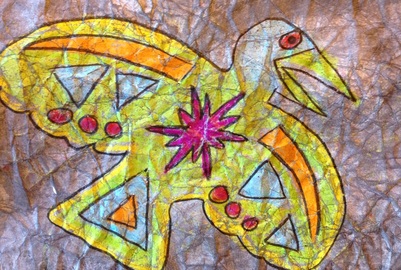 Crayon Batik
Crayon Batik
Title: How Raven Stole the Sun by Maria Willams/Felix Vigil
Technique: Crayon Batik
Tribe: Tlingit Region: Northwest
Cross curricular connections: Language arts, Social Studies
Grade(s): 2-3
Elements/Principles of art: Shape, Color, Contrast
Materials Needed:
9 x 12 white paper (or cut in half)
Crayons
Tempera paints
Brushes
Technique: Crayon Batik
Tribe: Tlingit Region: Northwest
Cross curricular connections: Language arts, Social Studies
Grade(s): 2-3
Elements/Principles of art: Shape, Color, Contrast
Materials Needed:
9 x 12 white paper (or cut in half)
Crayons
Tempera paints
Brushes
Girl Who Loved Wild Horses Drawing Lesson
Grade(s): 2-4 Tribes: Plains Region
Resource/Book: The Girl Who Loved Wild Horses, Paul Goble
Materials Needed:
How to draw a horse using geometric shapes
Pencils and erasers
9 x 12 paper
Oil pastels
Native American Art Projects:
"Tasunka" Lesson Plan
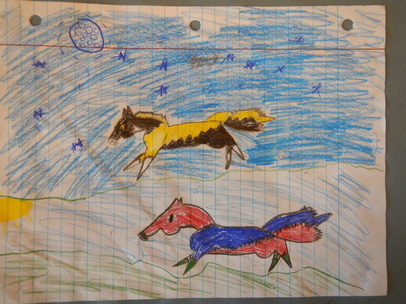
Technique: Drawing
Tribe: Lakota Region: Plains
Cross curricular connections: Language Arts
Grade(s): 4-5
Elements/Principles of art: Line, Shape, Color, Repetition
Native American Art Projects:
"Anishinabe Starry Night" Lesson Plan
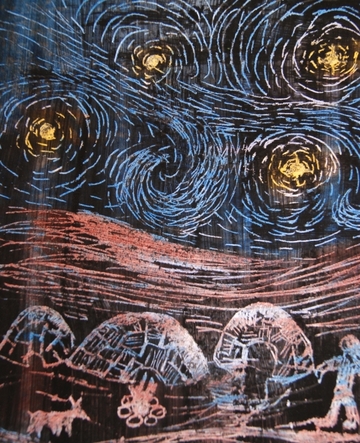
Technique: Scratchboard
Tribe: Anishinabe Region: Woodland
Cross curricular connections: Art, Science, Lang. Arts
Grade(s): 4-8
Elements/Principles of art: Movement, Texture, Space
Materials Needed:
Make your own:
*Older kids can divide paper into 3 sections; background middle ground and foreground. Color background the colors of a night sky (blues and violets with white/yellow moon and stars), color the middleground (dark blues and browns), color the foreground greens and blues.
*Younger kids can color random colors.
*Press hard, you want a thick layer of wax. This will take some time, you need a thick layer of wax crayon!
*Mix a few drops of dish soap into a small cup of black tempera paint, this will make the paint stick to the crayon. Paint a layer of black on the crayon and let dry. *Use a wooden stylus or tooth pick to scratch through the paint to reveal the color underneath! Ta Da!
Tribe: Anishinabe Region: Woodland
Cross curricular connections: Art, Science, Lang. Arts
Grade(s): 4-8
Elements/Principles of art: Movement, Texture, Space
Materials Needed:
- “How Fisher went to the Skyland- Origin of the Big Dipper” by: Bruchac, J., Native American Stories,1991
- Pre-inked scratchboard or make your own (see below)
Make your own:
*Older kids can divide paper into 3 sections; background middle ground and foreground. Color background the colors of a night sky (blues and violets with white/yellow moon and stars), color the middleground (dark blues and browns), color the foreground greens and blues.
*Younger kids can color random colors.
*Press hard, you want a thick layer of wax. This will take some time, you need a thick layer of wax crayon!
*Mix a few drops of dish soap into a small cup of black tempera paint, this will make the paint stick to the crayon. Paint a layer of black on the crayon and let dry. *Use a wooden stylus or tooth pick to scratch through the paint to reveal the color underneath! Ta Da!
- Scratching tools, or wooden stylus
- Van Gogh’s Starry Night -Google
- Read story aloud and discuss important imagery (*who *what *where *when*why)
- Examine Van Gogh’s Starry Night, discuss space, texture and movement.
- How can we create the same feeling of movement in a night sky to tell our Anishinabe story?
- Demo various ways to hold tools and create line/texture. Have the kids experiment of a small piece of the scratchboard creating different textures and lines.
- Students can then scratch their own Anishinabe Starry Night in the style of Van Gogh!
Native American Art Project:
"Cultural Mandala, Native American Contributions"
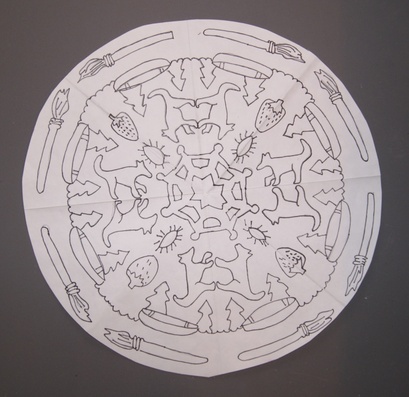
Technique: Drawing-Mandala
Tribe (s): Use the imagery/information of one specific tribe. Choose a tribe based on your unit of study or geographic location. Find out if there are children of Native American ancestry in your class/group. You can base the entire lesson on foods or a sport like Lacrosse. For older children research specific tribes and use imagery from 1 tribe, or break into groups and do several tribes.
Cross curricular connections: Social Studies
Grade(s): 3-8
Elements/Principles of art: Radial Symmetry
Materials Needed: white paper cut into 12” circles, sharpie markers, colored pencils, markers, watercolor pencils, etc.
Description:
Tribe (s): Use the imagery/information of one specific tribe. Choose a tribe based on your unit of study or geographic location. Find out if there are children of Native American ancestry in your class/group. You can base the entire lesson on foods or a sport like Lacrosse. For older children research specific tribes and use imagery from 1 tribe, or break into groups and do several tribes.
Cross curricular connections: Social Studies
Grade(s): 3-8
Elements/Principles of art: Radial Symmetry
Materials Needed: white paper cut into 12” circles, sharpie markers, colored pencils, markers, watercolor pencils, etc.
Description:
- Brainstorm and list contributions by Native Americans.
Native American Art:
"Haida Drawing" Lesson Plan
Materials: Pencils and erasers
Look at the Haida legends under photo galleries and click on :
VIDEO: The Power of the Haida
https://vimeo.com/459986300
Discussion questions:
-Why do you think art is so important to the Haida Nation?
-“Getting it right”, what is meant by that?
The video shows you how one artist develops his drawing and then reverses the process. What is the message?
Artist to View: Bill Reid
Book: How Raven Steals the Light, by Bill Reid and Robert Bringhurst
Description:
View Video “The Power of the Haida” and discuss
Examine the art of Bill Reid, Haida artist. Discuss use of line and shape and symmetry. Do any of his lines/shapes look as though he used a straight edge/ruler?
Look at the Haida legends under photo galleries and click on :
VIDEO: The Power of the Haida
https://vimeo.com/459986300
Discussion questions:
-Why do you think art is so important to the Haida Nation?
-“Getting it right”, what is meant by that?
The video shows you how one artist develops his drawing and then reverses the process. What is the message?
Artist to View: Bill Reid
Book: How Raven Steals the Light, by Bill Reid and Robert Bringhurst
Description:
View Video “The Power of the Haida” and discuss
Examine the art of Bill Reid, Haida artist. Discuss use of line and shape and symmetry. Do any of his lines/shapes look as though he used a straight edge/ruler?
Native American Art:
"Parfleche" Lesson Plan
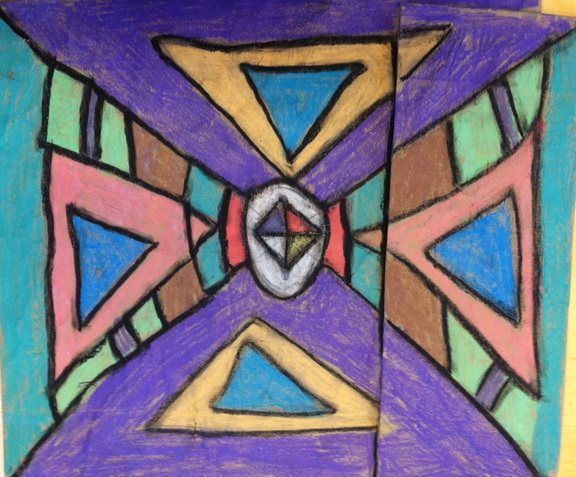
Title/Technique: Parfleche Portfolio
Tribe (s): Lakota, Kiowa, Shoshone Region: Plains
Cross curricular connections: Reading, Lang Arts, History
Grade(s): 4-6
Elements/Principles of art: symmetry, geometric shape, balance
Materials:
pencils and erasers
brown craft paper or paper bags
crayons
Description:
What are they?
What are they made of?
What is their purpose?
What shapes, lines, and patterns do you see?
Tribe (s): Lakota, Kiowa, Shoshone Region: Plains
Cross curricular connections: Reading, Lang Arts, History
Grade(s): 4-6
Elements/Principles of art: symmetry, geometric shape, balance
Materials:
pencils and erasers
brown craft paper or paper bags
crayons
Description:
What are they?
What are they made of?
What is their purpose?
What shapes, lines, and patterns do you see?
Native American Art:
"Buffalo Woman: Book Illustration" Lesson Plan
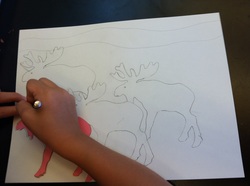
Title/Technique: Buffalo Ledger Art and Modern Illustration
This lesson uses Paul Goble’s “Buffalo Woman” for inspiration. His illustration technique utilizes repetitive patterns to create a unified and balanced design. We will examine his technique and the Ledger Art of Bear’s Heart, a Cheyenne prisoner in Fort Marion 1875.
Tribe (s): Cheyenne Region: Plains
Cross curricular connections: Lang arts, US History
Grade(s): 4-8
Elements/Principles of art: Line, Pattern, Repetition, Space
Materials:
9 x 12 white paper
pencils and erasers
tagboard 3 x 5 roughly
markers
Book by Paul Goble: Buffalo Woman
Compare and Contrast:
View the Ledger Art of Bears’s Heart: http://americanhistory.si.edu/documentsgallery/exhibitions/ledger_drawing_1.html
Do you see an similarities? Where did Paul Goble get his inspiration?
(Older students could explore Ledger art in detail if desired)
This lesson uses Paul Goble’s “Buffalo Woman” for inspiration. His illustration technique utilizes repetitive patterns to create a unified and balanced design. We will examine his technique and the Ledger Art of Bear’s Heart, a Cheyenne prisoner in Fort Marion 1875.
Tribe (s): Cheyenne Region: Plains
Cross curricular connections: Lang arts, US History
Grade(s): 4-8
Elements/Principles of art: Line, Pattern, Repetition, Space
Materials:
9 x 12 white paper
pencils and erasers
tagboard 3 x 5 roughly
markers
Book by Paul Goble: Buffalo Woman
Compare and Contrast:
View the Ledger Art of Bears’s Heart: http://americanhistory.si.edu/documentsgallery/exhibitions/ledger_drawing_1.html
Do you see an similarities? Where did Paul Goble get his inspiration?
(Older students could explore Ledger art in detail if desired)
Native American Art Project:
"Lakota Winter Counts" Lesson Plan
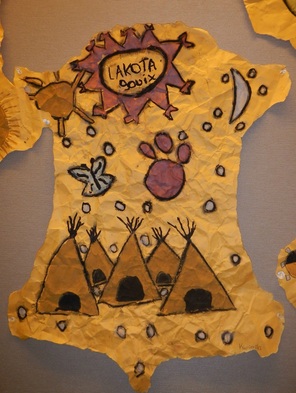
Title/Technique: Lakota Winter Counts: Drawing
This lesson uses the Smithsonian Web site for an introduction to Lakota Winter Counts. After learning about the importance and meaning of the symbols, students will design their own.
This lesson could be used to record a memorable event from summer, a year in the classroom, or a weekly journaling method by drawing a symbol for an important event/teaching each week.
Tribe (s): Lakota Region: Plains
Cross curricular connections: Reading, Lang Arts, History
Grade(s): 4-8
Elements/Principles of art: Line, shape, unity
Materials:
paper 3” square.
pencils and erasers
colored pencils
Description:
This lesson uses the Smithsonian Web site for an introduction to Lakota Winter Counts. After learning about the importance and meaning of the symbols, students will design their own.
This lesson could be used to record a memorable event from summer, a year in the classroom, or a weekly journaling method by drawing a symbol for an important event/teaching each week.
Tribe (s): Lakota Region: Plains
Cross curricular connections: Reading, Lang Arts, History
Grade(s): 4-8
Elements/Principles of art: Line, shape, unity
Materials:
paper 3” square.
pencils and erasers
colored pencils
Description:
- Compare and contrast Winter Counts and modern Diaries. How else do we record history in modern times?
- Brainstorm: What events are important to you and your family? (examples: birth, death, weddings, first steps, learning to read, sports, animals/pets, etc)
- Choose an event that is important, what is the story? What symbol could you use to help you remember the story?
- Design a symbol to represent your event It should be roughly 2.5 inches.
- Share with a classmate and refine as needed.
- Each student can draw their symbol and color on the 3” paper.
- Mount all symbols to a poster size piece of paper
- Share stories and describe the importance of the symbol they chose.
- More ideas:
- Older students could make a Winter Count Journal, drawing/writing an entry weekly.
- Symbols could be added weekly, monthly or by seasons.
- Students could create person calendars to record events.
- Class could create a chart format (like the web site used) with student names on the left, dates along the top, add entries as the year progresses.
As an Amazon Associate I earn from qualifying purchases.
Copyright Restrictions and the NativeAmericanActivities Web Site:
Be aware that all text and images on the Native American Activities website are Copyright Protected.
You must obtain written permission to reproduce or transmit any NativeAmericanActivities materials.
Teachers may print-out text and images without restriction for use in a non-internet classroom setting. the following statement should be included on each copy:
Copyright © 2023 Native American Projects & Lessons Plans. Internet URL: http://www.nativeamericanactivities.com
